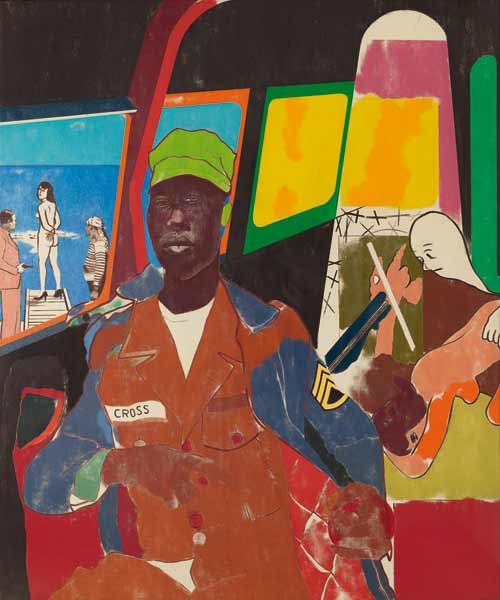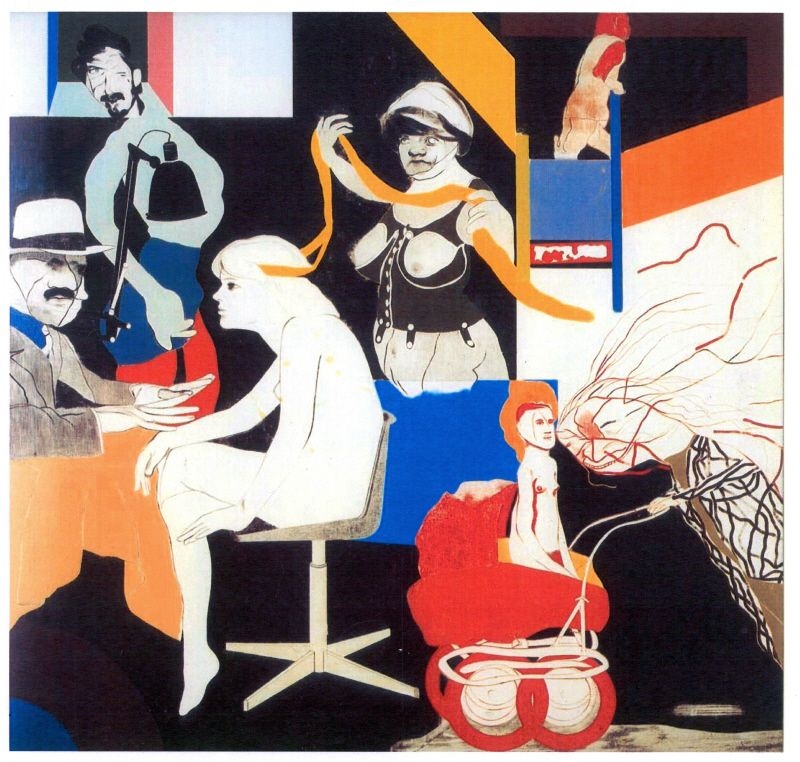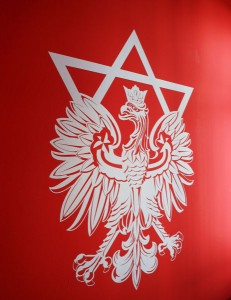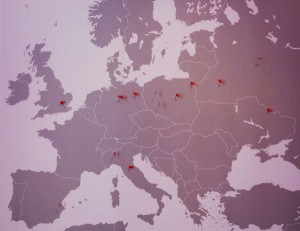
R.B. Kitaj, Juan de la Cruz, 1967 © R.B. Kitaj Estate. Astrup Fearnley Museum of Modern Art, Oslo
Only now do I realize, really examining my favorite Kitaj painting closely, that Juan de la Cruz also has those explicit and aggressive sexual components so peculiar to his work: naked women are a vehicle for political messages (here about the Vietnam War) and historical episodes, for instance about St. John of the Cross, St. Teresa of Avila, and their Jewish origins, which I find inherently problematic. Despite this, however, I like the painting: the many powerful colors, the deep blue sea under the brilliant blue sky, the green cap on the soldier’s head, and the yellow behind him. The painting and the contradictions it binds together – the soldier’s finely-drawn features beside the sober geometric forms – they emanate something of summer’s optimism.
For more on R.B. Kitaj, see: www.jmberlin.de/kitaj/en
Christine Marth, Publications
The preparations for the exhibition R.B. Kitaj (1932–2007) Obsessions at the Jewish Museum Berlin have brought me back to Philip Roth. I try to re-read him about every ten years.

R. B. Kitaj, The Ohio Gang, 1964 © R.B. Kitaj Estate 2012. Digital image, The Museum of Modern Art, New York/Scala, Florence
Why? Out of curiosity; to test my feminist – or better and more simply, my feminine – distaste for Roth; to see if my increasing maturity has stimulated some new cognitive process that allows me to encounter the aging, sex-obsessed, white, male ego of the Roth hero with more empathy; or at last to discover exactly why Roth is a reigning great of American literature, which he undisputedly is. It is said that the lecherous puppeteer Mickey Sabbath of “Sabbath’s Theater” is modeled on the author’s neighbor and friend, R.B. Kitaj, but others of Roth’s characters bear traits or biographical details in common with the artist. To sum up, I can’t yet confess that Philip Roth’s characters appeal to me, but I do notice that they have become in a way “historical,” a portrayal of their time. It isn’t dissimilar to the way one enjoys the groping chauvinists of Mad Men, without necessarily wishing to return to the age of oversexed secretaries and mousy housewives. In any case, the projected figure of the artist R.B. Kitaj has grown more vivid, more three-dimensional in my imagination – and I’m all the more excited to get acquainted with the “real” Kitaj beginning in September through the paintings at the Jewish Museum.
For more on R.B. Kitaj, see: www.jmberlin.de/kitaj/en
Signe Rossbach, Events curator


Initiated in 2007 by the Israeli artist Yael Bartana, the Jewish Renaissance Movement in Poland seeks to “bring back” 3.3 millions of Jews, “replenishing” the country which suffered the greatest loss of Jewish life between 1941 and 1945. An estimated three million Polish Jews were murdered by the National Socialists, 300 000 were able to flee.
The Renaissance Movement called an international conference in order to formulate its agenda at the 7th Berlin Biennale in May 2012. The movement was represented at last year’s Venice Biennale by various films portraying fictional “homecomings.” See more: www.jrmip.org/
Anna Povejsilova, Media



